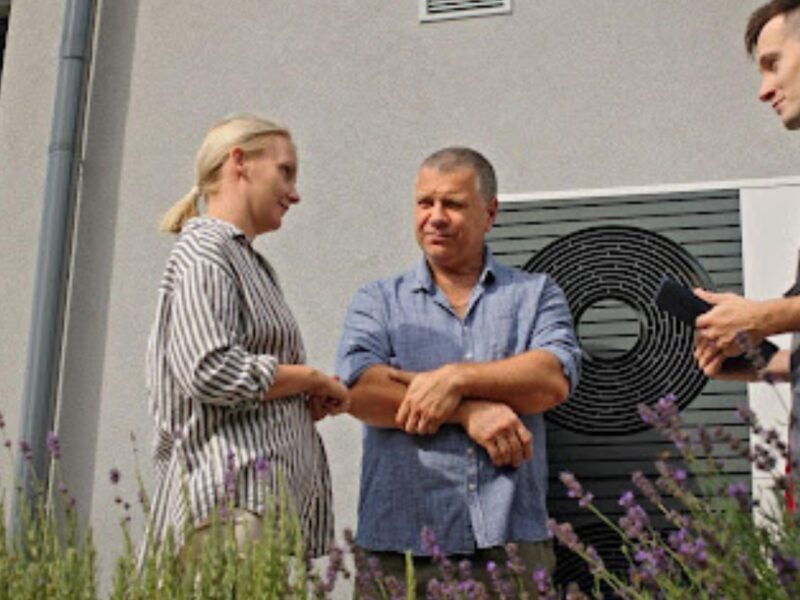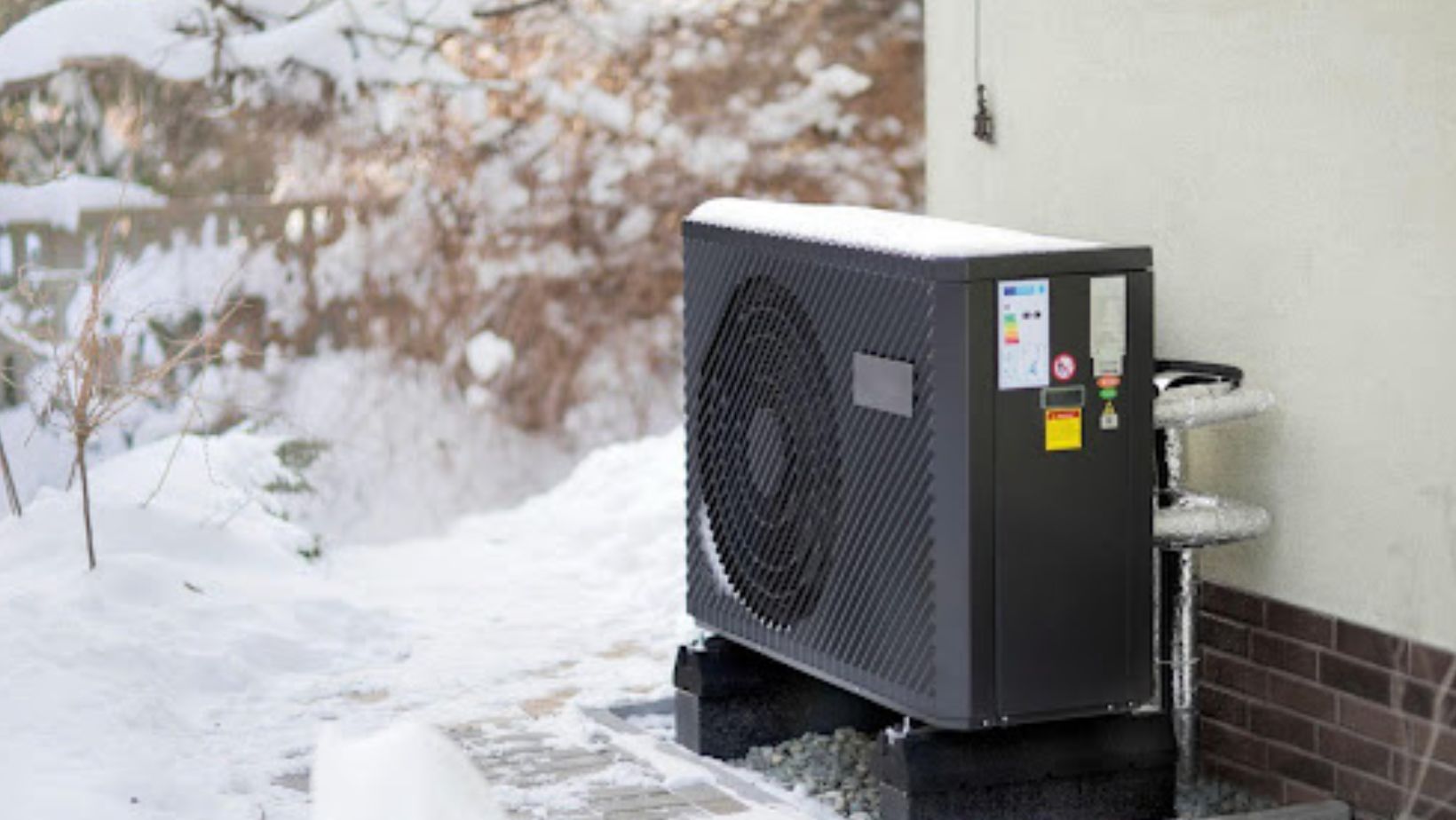Heat pump installation offers a smart solution for year-round comfort, providing both heating and cooling capabilities. These energy-efficient systems reduce utility bills and support eco-friendly living. Homeowners can explore options like ductless heat pumps for flexibility or take advantage of heat pump rebates to offset initial costs. With proper sizing and professional installation, heat pumps deliver reliable performance and long-term value, making them a wise investment for modern homes.
As energy costs rise and environmental concerns grow, homeowners are increasingly seeking sustainable solutions for year-round comfort. Modern heating and cooling systems have evolved to meet these demands, with one standout option being heat pump technology. These systems provide an efficient way to manage indoor temperatures, offering both heating and cooling functions without relying on traditional HVAC setups.
For those considering heat pump installation in Calgary, the benefits extend beyond convenience. Homeowners can enjoy reduced energy consumption, quieter operation, and access to financial incentives like heat pump rebates. With advancements in ductless models, installation has become more flexible than ever. Understanding how these systems work and their long-term value is key to making an informed decision.
Benefits of Choosing Heat Pump Installation for Energy Efficiency
Heat pumps have emerged as a leading choice for homeowners seeking energy-efficient heating and cooling solutions. Unlike traditional systems that generate heat, heat pumps transfer it from one place to another, consuming significantly less energy in the process. This innovative approach not only reduces utility bills but also minimizes a home’s carbon footprint.
How Heat Pumps Support Sustainability
Modern heat pump technology aligns with eco-friendly living by utilizing renewable energy sources. Here are some key advantages:
- Reduced Energy Consumption: Heat pumps operate on electricity, often requiring less power than gas or oil-based systems.
- Lower Emissions: By relying on heat transfer rather than combustion, these systems produce fewer greenhouse gases.
- Year-Round Functionality: A single system provides both heating and cooling, eliminating the need for separate units.
Comparing Ductless vs. Traditional Systems
When considering heat pump options, homeowners often weigh ductless models against traditional setups. Ductless heat pumps offer greater flexibility, especially in homes without existing ductwork. They allow for zoned heating and cooling, giving residents precise control over individual room temperatures. On the other hand, traditional systems may suit larger spaces where centralized temperature management is preferred.
By understanding these distinctions, homeowners can make informed decisions that align with their comfort needs and sustainability goals.
Key Factors to Consider Before Scheduling Heat Pump Replacement
Replacing an existing heating or cooling system with a heat pump requires careful planning and consideration. While the benefits of heat pump technology are clear, several factors influence the decision-making process. From assessing home size to evaluating installation costs, understanding these elements ensures a smooth transition and optimal performance.
Assessing Your Home’s Heating and Cooling Needs
Before proceeding with heat pump replacement, homeowners should evaluate their unique requirements:
- Home Size and Layout: Larger homes may need multiple units or a centralized system to maintain consistent temperatures.
- Climate Compatibility: Heat pumps perform best in moderate climates, but advancements in cold-climate models now support efficient operation even in chillier regions.
- Existing Infrastructure: Homes with ductwork can integrate traditional systems, while ductless heat pumps are ideal for spaces without pre-existing ducts.
Understanding Heat Pump Costs
While heat pump installation offers long-term savings, upfront costs can vary significantly. Factors influencing expenses include:
- Type of system (ductless vs. traditional).
- Complexity of installation, such as retrofitting older homes.
- Additional components like thermostats or zoning controls.
Financial incentives, such as heat pump rebates, can help offset initial expenses. These programs are often available through government initiatives or local utility providers, making the investment more accessible.
By carefully weighing these considerations, homeowners can select a system that balances efficiency, functionality, and budgetary constraints.
Maximizing Savings with Heat Pump Rebates and Incentives
One of the most compelling reasons to invest in a heat pump is the availability of financial incentives designed to reduce upfront costs. These programs not only make heat pump installation more affordable but also encourage the adoption of energy-efficient technologies. Understanding how to access and maximize these rebates can significantly enhance the value of your investment.
Exploring Available Heat Pump Rebates
Rebates and incentives are often offered at multiple levels, including federal, provincial, and municipal programs. Homeowners can take advantage of:
- Government Programs: Initiatives like Canada’s Greener Homes Grant provide funding for energy-efficient upgrades, including heat pumps.
- Utility Provider Offers: Many local utility companies offer rebates to offset installation costs, promoting reduced energy consumption.
- Manufacturer Discounts: Some heat pump manufacturers provide additional savings when purchasing their products through certified installers.
Steps to Secure Financial Incentives
To ensure eligibility for these programs, homeowners should follow a structured approach:
- Research Eligibility Criteria: Each program has specific requirements, such as system efficiency ratings or professional installation by certified heat pump installers.
- Gather Necessary Documentation: This may include proof of purchase, installation certificates, or energy audits.
- Apply Promptly: Rebate programs often have limited funding, so early applications increase the likelihood of approval.
By leveraging these incentives, homeowners can significantly reduce the overall cost of heat pump installation while contributing to broader environmental goals.
Understanding Heat Pump Costs and Long-Term Value
While the initial investment in a heat pump may seem substantial, evaluating the long-term value reveals its financial and practical benefits. Heat pumps are designed to deliver consistent performance over many years, making them a cost-effective choice for homeowners seeking reliable year-round comfort. By understanding the factors influencing costs and their return on investment, you can make a well-informed decision.
Breaking Down Heat Pump Costs
The total cost of heat pump installation varies based on several factors:
- System Type: Ductless heat pumps often have lower installation costs compared to traditional systems requiring ductwork.
- Efficiency Ratings: High-efficiency models may have higher upfront costs but result in greater energy savings over time.
- Home Modifications: Homes without existing infrastructure may require additional upgrades, such as electrical work or zoning controls.
On average, heat pump costs range from $3,000 to $10,000, depending on the system’s complexity and capacity. However, these expenses are offset by reduced utility bills and minimal maintenance requirements.
Long-Term Savings and Benefits
Beyond immediate costs, heat pumps offer significant long-term advantages:
- Energy Savings: Homeowners can save up to 50% on heating and cooling bills compared to traditional systems.
- Durability: Modern heat pumps are built to last 15–20 years with proper maintenance, ensuring lasting performance.
- Increased Property Value: Energy-efficient upgrades, like heat pumps, enhance a home’s market appeal and resale value.
By focusing on the lifetime value rather than just the upfront expense, homeowners can appreciate how heat pump technology supports both financial and environmental sustainability.
Final Thoughts on Heat Pump Installation for Year-Round Comfort
Investing in a heat pump installation is more than just a home upgrade – it’s a step toward sustainable, efficient, and cost-effective living. From reducing energy consumption to accessing valuable rebates, the benefits of this technology extend far beyond immediate comfort.
As advancements in heat pump technology continue to evolve, options like ductless systems and cold-climate models offer even greater flexibility and performance. By staying informed about these innovations and understanding how they align with your goals, you can create a comfortable, eco-friendly living space that stands the test of time.
Homeowners who carefully consider their needs, explore available incentives, and prioritize long-term value are well-positioned to make a decision that enhances both their lifestyle and property.







